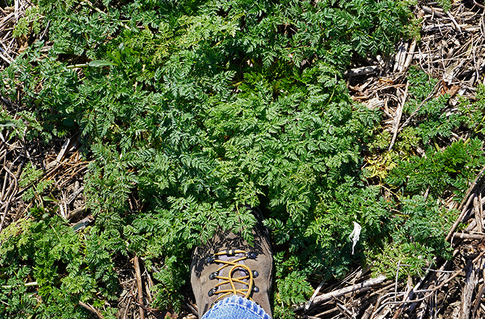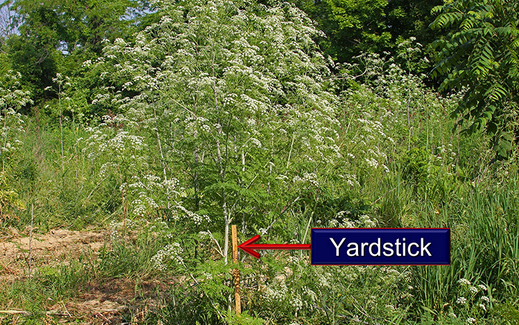[ad_1]
There’s a weed that’s poisonous to both humans and animals that experts are saying to avoid this summer.It’s called poison hemlock and according to researchers, it’s one of the deadliest plants in North America.Researchers with the Ohio State University’s Buckeye Yard and Garden onLine released in May 2021 that poison hemlock was beginning to “bolt and bloom” across Ohio.According to Joe Boggs with the OSU Extension, poison hemlock has a biennial life cycle. This means the first year is spent in a vegetative stage and plants began bolting during the second year, otherwise known at the reproductive stage, which produces multi-branched stems that are topped with umbrella-like flowers.OSU researchers said the plants typically flower between June and August.Mature poison hemlock plants can be as much as 6 to 10 feet tall. The plants can produce seeds that remain viable for four to six years, according to Boggs.The public should be wary of poison hemlock while outside this summer, as poison hemlock plants contain highly toxic compounds that can “cause respiratory failure and death in mammals.”Researchers said the roots are more toxic than the leaves or stems, but all parts of the plant, including the seeds, are poisonous and should be considered dangerous.According to experts, the toxins must be ingested or enter through the eyes or nasal passages to cause poisoning. The plant does not cause skin rashes or blistering.Poison hemlock was allegedly used to poison the Greek philosopher Socrates, according to OSU. Researchers said this dangerous non-native weed is increasingly being found growing near people, such as alongside roadways.The safest way to control poison hemlock is by using herbicides. Researchers said this minimizes risks associated with direct contact. However, researchers recommend making herbicide applications before the plants produce flowers.The public can control poison hemlock by mowing bolting plants before they produce flowers. Researchers said it must be noted that low-growing rosettes may escape the blade and seeds are unaffected. This means an infestation will not be eliminated in one mowing season, according to OSU.Poison hemlock plants may also be hand-pulled before flowering and thrown away in a safe manner.For more information on identifying poison hemlock, click here. Click here for ways to control poison hemlock safely.
There’s a weed that’s poisonous to both humans and animals that experts are saying to avoid this summer.
It’s called poison hemlock and according to researchers, it’s one of the deadliest plants in North America.
Researchers with the Ohio State University’s Buckeye Yard and Garden onLine released in May 2021 that poison hemlock was beginning to “bolt and bloom” across Ohio.
According to Joe Boggs with the OSU Extension, poison hemlock has a biennial life cycle. This means the first year is spent in a vegetative stage and plants began bolting during the second year, otherwise known at the reproductive stage, which produces multi-branched stems that are topped with umbrella-like flowers.
OSU researchers said the plants typically flower between June and August.
Mature poison hemlock plants can be as much as 6 to 10 feet tall. The plants can produce seeds that remain viable for four to six years, according to Boggs.
The public should be wary of poison hemlock while outside this summer, as poison hemlock plants contain highly toxic compounds that can “cause respiratory failure and death in mammals.”
Researchers said the roots are more toxic than the leaves or stems, but all parts of the plant, including the seeds, are poisonous and should be considered dangerous.
According to experts, the toxins must be ingested or enter through the eyes or nasal passages to cause poisoning. The plant does not cause skin rashes or blistering.
Poison hemlock was allegedly used to poison the Greek philosopher Socrates, according to OSU.
Researchers said this dangerous non-native weed is increasingly being found growing near people, such as alongside roadways.
The safest way to control poison hemlock is by using herbicides. Researchers said this minimizes risks associated with direct contact. However, researchers recommend making herbicide applications before the plants produce flowers.
The public can control poison hemlock by mowing bolting plants before they produce flowers. Researchers said it must be noted that low-growing rosettes may escape the blade and seeds are unaffected. This means an infestation will not be eliminated in one mowing season, according to OSU.
Poison hemlock plants may also be hand-pulled before flowering and thrown away in a safe manner.
For more information on identifying poison hemlock, click here. Click here for ways to control poison hemlock safely.
[ad_2]
Source link



